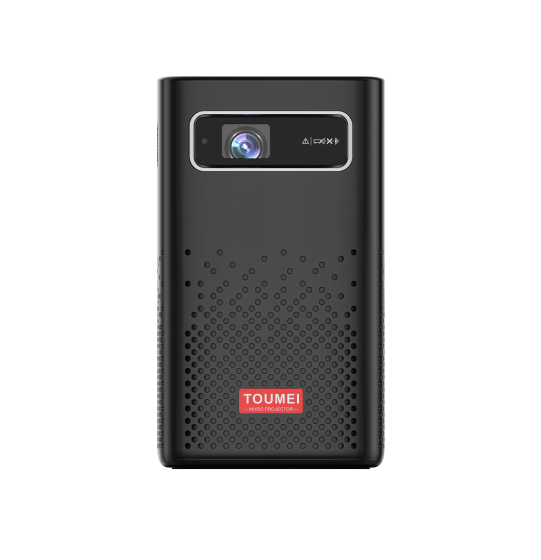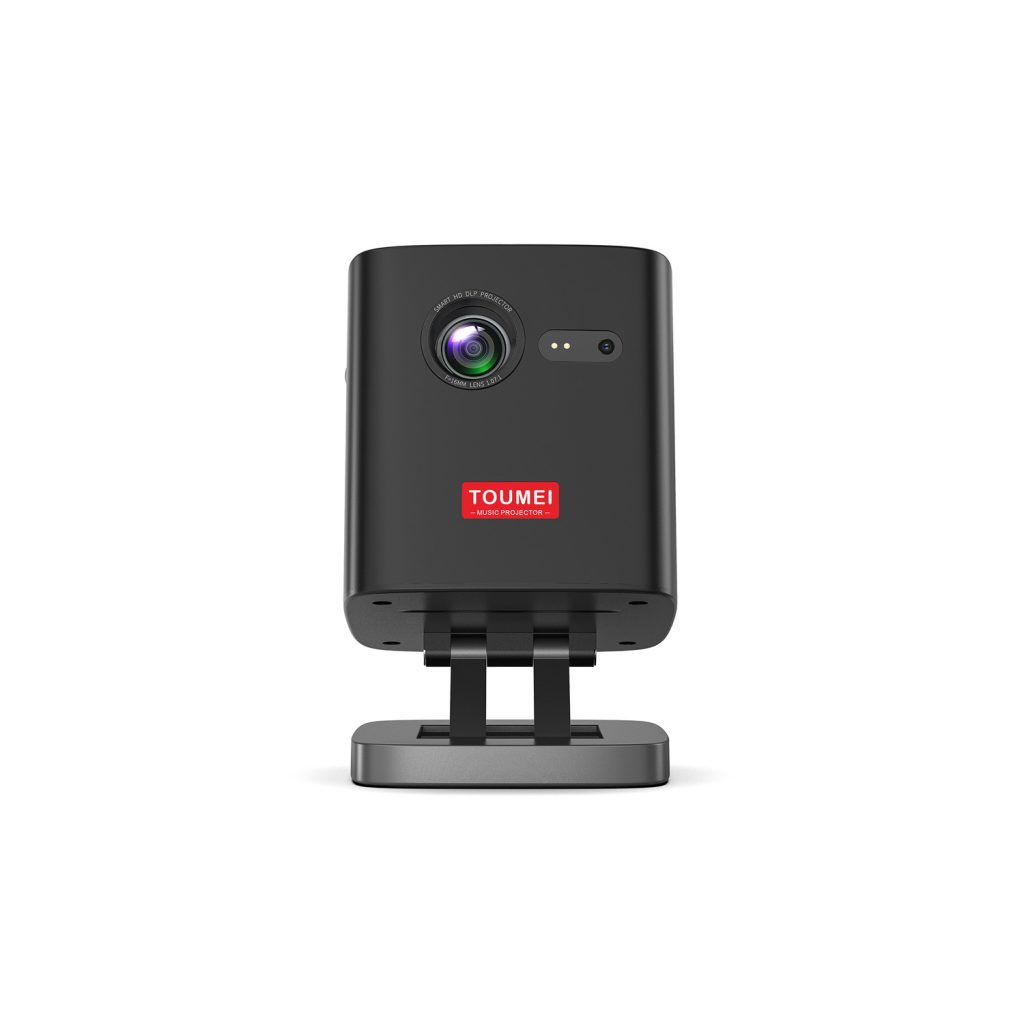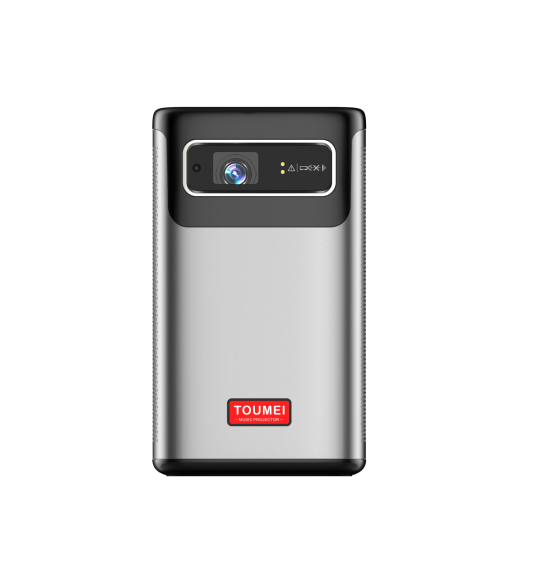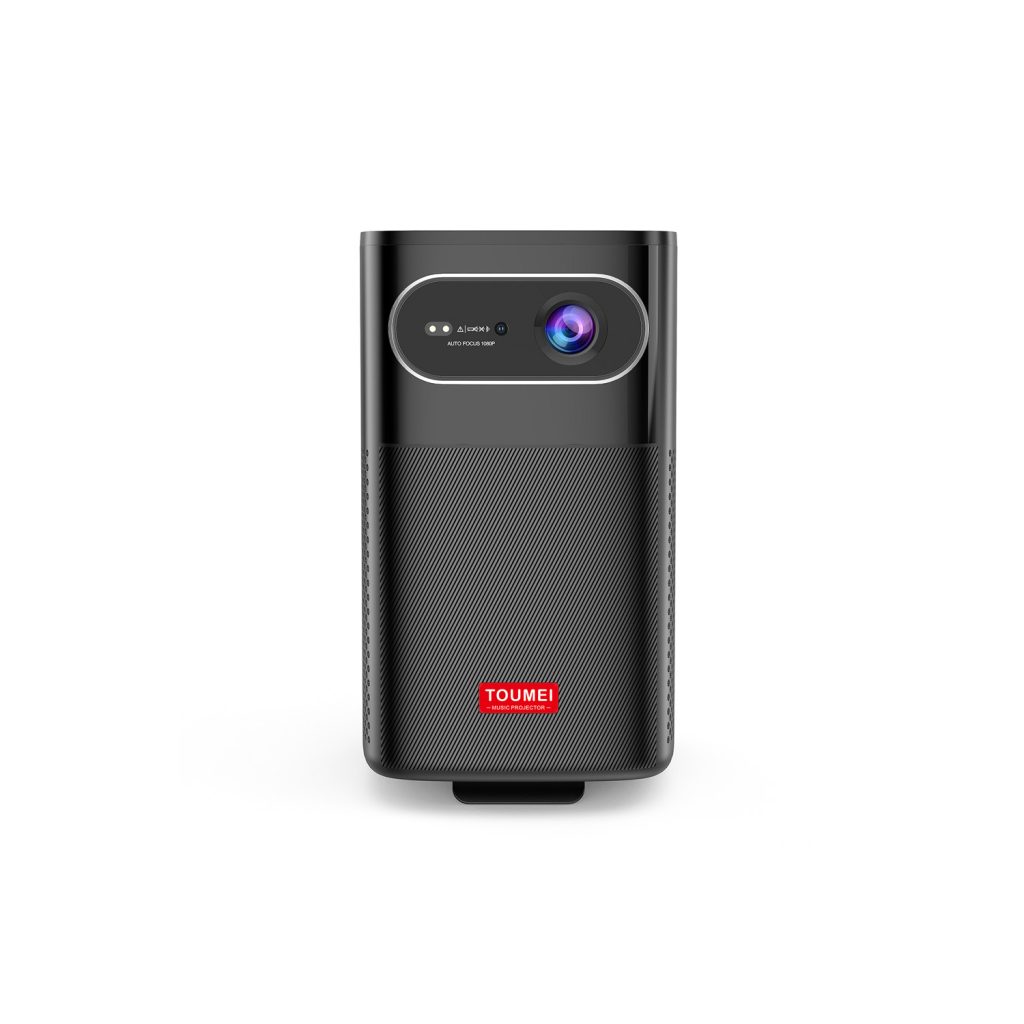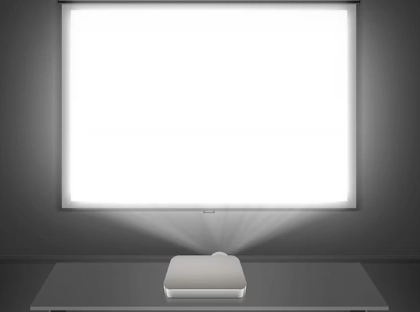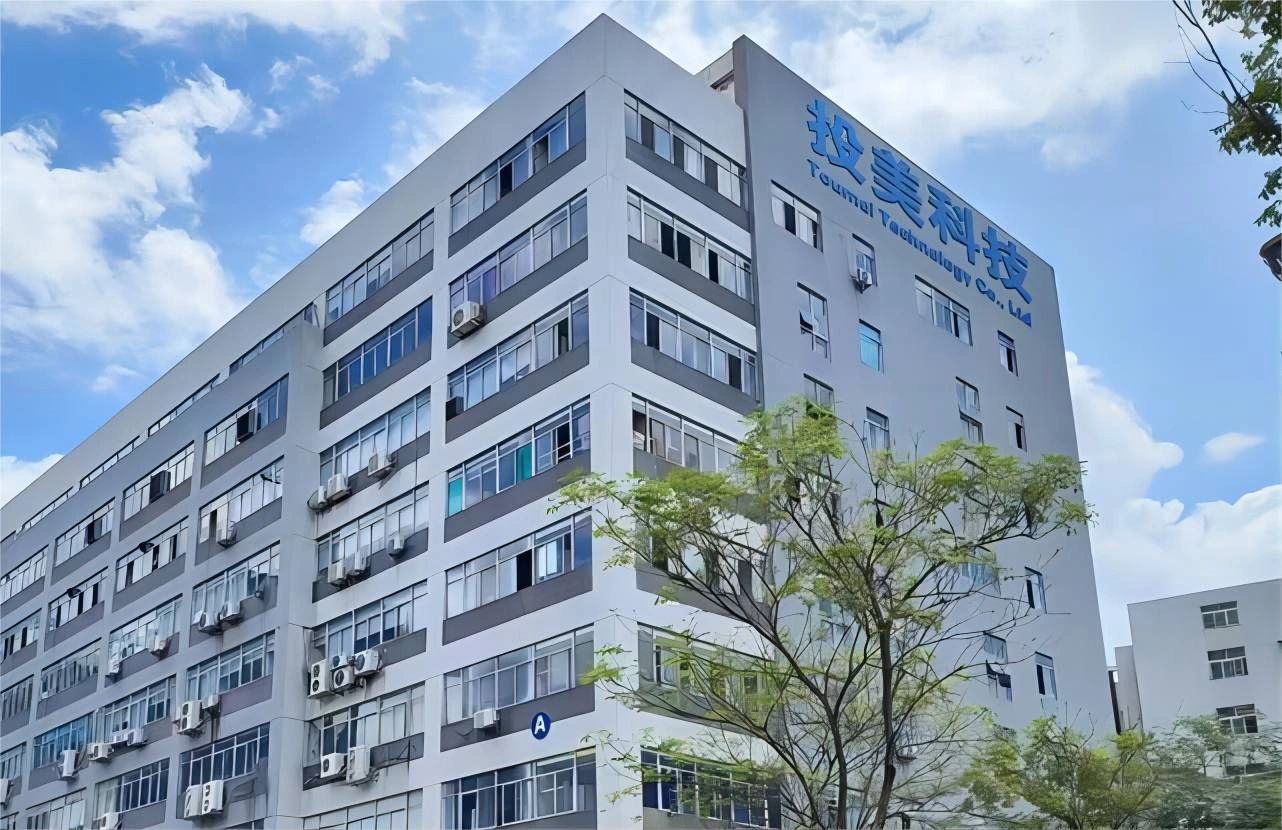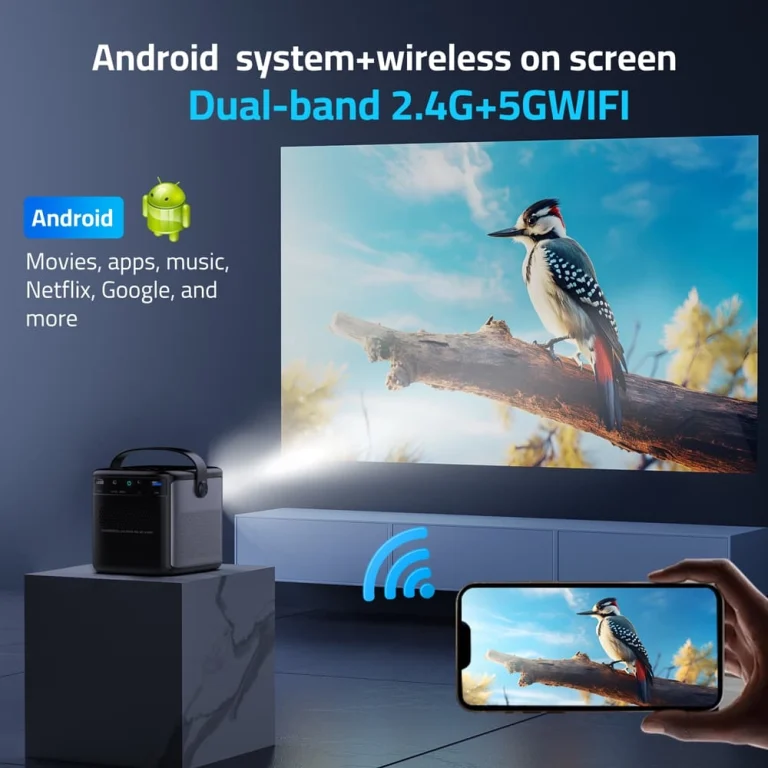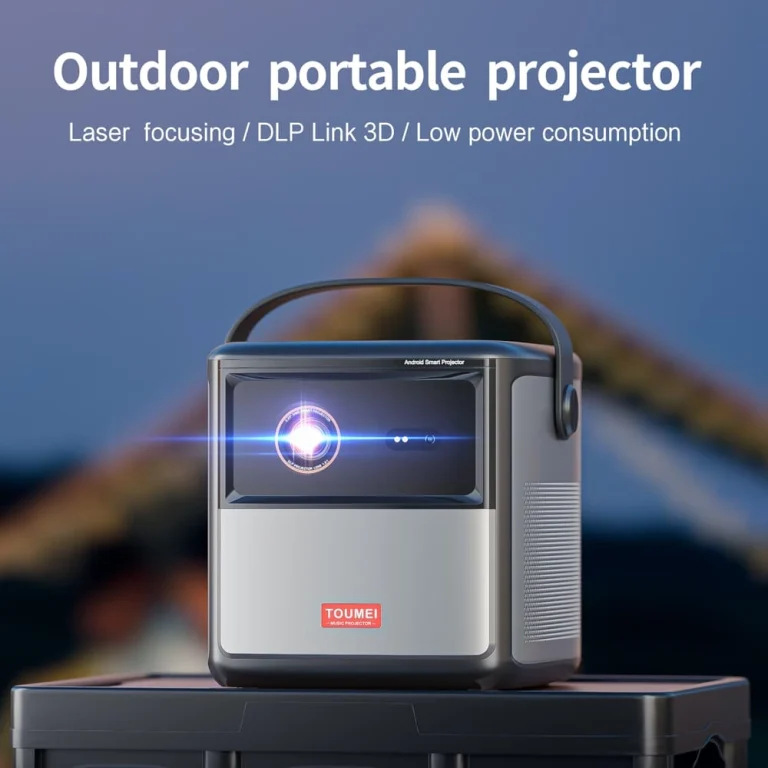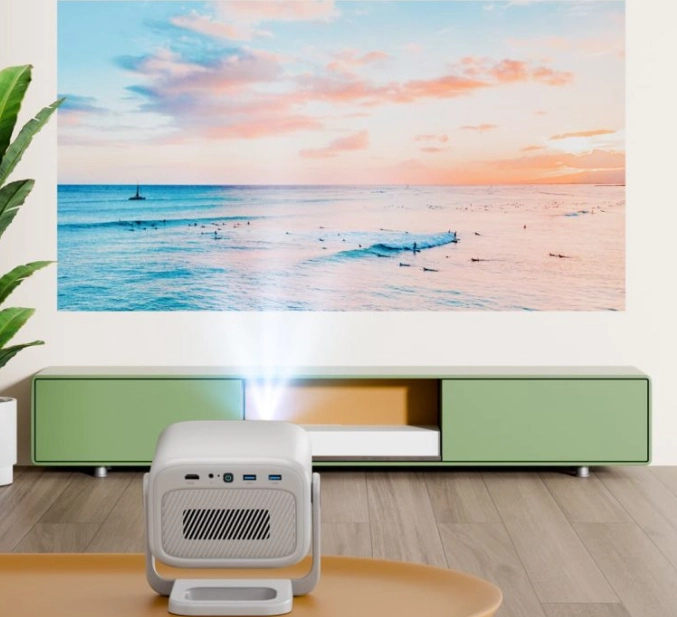Lumens projector brightness is vital for clear pictures in many settings. Picking the right lumen level ensures bright images for home movie spaces, workplaces, or outdoor gatherings. This guide explains lumens, their role, and how to choose the perfect projector. Learn why TOUMEI stands out as a reliable provider of high-quality projectors.
What Are Projector Lumens and Why Do They Matter?
Lumens are a key part of how projectors work. They directly affect how sharp and lively images look in various places. Knowing about lumens helps you make smart choices for your projection tasks, whether for fun, learning, or work. Lumens measure a projector’s light output, showing its brightness. A higher lumen number creates a clearer picture. This is important for beating extra light or showing on bigger screens. For example, a projector with 3,000 lumens shines brighter than one with 1,500 lumens. It works better in lit areas or outside. Brightness greatly shapes picture quality in different settings. In dark rooms, fewer lumens may be enough for clear images. But in spaces with sunlight or indoor lights, more lumens keep visuals sharp and colorful. Too little brightness makes images look faded. This lowers enjoyment for films, talks, or games. Too much brightness in small, dark areas can tire eyes.
How to Determine the Right Lumen Level for Your Environment?
Choosing the proper light output for your projection system mainly depends on your intended usage location and purpose. Multiple essential elements affect how intense your device’s illumination should be to achieve the best possible picture quality. Among these, room dimensions and surrounding light levels matter most.
For compact, pitch-black areas such as private movie rooms, 1,500 to 2,000 lumens usually suffices. These spaces don’t require extremely powerful illumination. Nevertheless, more spacious areas or those with glass openings and additional lamps will need noticeably stronger luminosity. Take a 300 sq.ft. meeting space with daylight as an example – it may demand 3,500 to 5,000 lumens to preserve crisp, easy-to-see visuals. Exterior locations pose the toughest obstacles, frequently needing over 5,000 lumens to rival the sun’s glare.
The contrast between inside and outside arrangements proves especially significant. Enclosed spaces with managed illumination normally perform well with 1,500 to 3,500 lumens for residential or workplace uses. Open-air sites, conversely, require considerably greater intensity – ranging from 4,000 to 10,000 lumens based on circumstances. A twilight garden party could need roughly 4,000 lumens, whereas a midday festival might demand 7,000 lumens or beyond for proper visibility.
Keep in mind these represent broad recommendations. Your particular situation might differ due to elements like projection surface material, what you’re showing (slideshows versus films), and how many people are watching. Opting for somewhat stronger brightness than initially estimated remains advisable since it offers adaptability for various viewing situations. Contemporary projection units frequently incorporate adjustable intensity settings, letting you reduce unnecessary brightness when suitable while preserving the option for more luminous scenarios when required.
Additional considerations come into play when selecting appropriate brightness. Wall colors influence light reflection – pale surfaces brighten the whole area. Ceiling height matters too since taller ceilings need more powerful illumination. Usage frequency and duration also factor in – regularly used setups may benefit from more durable high-lumen models.
Different projection content demands varying brightness levels. Text-heavy presentations typically require greater luminosity for readability. Movie watching benefits from balanced brightness and contrast for optimal visuals. Color-rich images need specific intensity levels for accurate reproduction.
Projection technology types affect brightness performance differently. Some newer systems deliver brighter-looking images at equivalent lumen ratings. Brand variations in actual brightness output exist too, so don’t rely solely on advertised specifications.
Maintenance impacts brightness longevity. Regular filter cleaning and proper ventilation help maintain peak performance. Light sources naturally dim over time – an important consideration when choosing.
Remember that brightness isn’t the only crucial factor. It must complement other specifications like contrast ratio and resolution for best results. Finding a well-balanced model within your budget makes the wisest choice. Whenever possible, test units in person or consult trustworthy reviews before purchasing to ensure the perfect match for your needs.
| Environment | Lumen Range | Typical Use Case |
| Indoor (Dark) | 1,500–2,500 Lumens | Home theater, small presentations |
| Indoor (Lit) | 2,500–4,000 Lumens | Classrooms, offices, meeting rooms |
| Outdoor (Twilight) | 4,000–6,000 Lumens | Backyard movies, evening events |
| Outdoor (Daylight) | 6,000–10,000 Lumens | Festivals, daytime outdoor screenings |
What Are the Recommended Lumen Levels for Specific Applications?
Different tasks need specific lumen levels to get the best outcomes. Home movie projectors focus on picture quality in controlled spaces, making lumens very important. In a home movie area with little light, 1,500–2,500 lumens give bright colors and dark blacks for a theater-like feel. For screens up to 120 inches, 1,800 lumens are often perfect. They ensure clear visuals without too much light. Projectors like those in TOUMEI’s product lineup provide balanced brightness for fun film nights. Workplace and classroom projectors must work in varied lighting conditions. These areas often have light from windows or bulbs, needing 2,500–4,000 lumens for clear text and pictures. A 3,000-lumen projector fits a medium-sized meeting room with a 100-inch screen. It keeps presentations easy to see. Larger rooms may need 4,500 lumens or more to stay clear. Outdoor projectors face the hardest lighting challenges, requiring strong lumen levels. For evening events like backyard film screenings, 4,000–6,000 lumens ensure colorful images on 150-inch screens, even in dim conditions. Daytime events, like festivals or sports viewings, need 6,000–10,000 lumens to beat sunlight. High-lumen projectors keep visuals clear in tough settings. They are great for big outdoor events.
| Application | Recommended Lumens | Screen Size | Lighting Conditions |
| Home Theater | 1,500–2,500 | 80–120 inches | Dark, controlled |
| Office/Classroom | 2,500–4,000 | 100–150 inches | Ambient light |
| Outdoor (Evening) | 4,000–6,000 | 120–200 inches | Twilight/low light |
| Outdoor (Daylight) | 6,000–10,000 | 150–300 inches | Daylight |
How Does TOUMEI Stand Out as a Reliable Lumens Projector Supplier?
TOUMEI is a leading supplier of projectors, offering smart solutions for home fun, work settings, and outdoor gatherings. TOUMEI has a wide range of products, including small models like the C800S with 200 lumens for easy travel and powerful projectors like the V7 Pro with 600 lumens for movie spaces and outdoor uses. Their products cover many lumen needs, from 200 to over 4,000. This makes them suitable for different settings. Features like 4K input and Android 9.0 OS add flexibility, making TOUMEI projectors great for gaming, streaming, and presentations. Check out their offerings at TOUMEI’s product page. TOUMEI focuses on quality with advanced tools like LED and laser light sources, lasting up to 30,000 hours. Their projectors have smart focus and auto angle correction for easy setup. TOUMEI’s commitment to new ideas ensures their products meet current needs, from immersive movie experiences to strong outdoor projections. They offer help with fixes, care tips, and warranties, ensuring lasting reliability.
Conclusion
Choosing the right projector lumens is crucial for bright, clear images in any place. Understand lumens and check location factors. Pick light strength for specific tasks to improve your projection experience. Whether for movie spaces, work presentations, or outdoor events, TOUMEI’s innovative projectors provide excellent performance. Invest in the ideal lumen level and transform your visuals today.
FAQs About Evaluating Projector Lumens
What Happens If I Choose a Projector with Too Many or Too Few Lumens?
Too few lumens make images dim and faded, especially in bright areas. This lowers clarity. Too many lumens in a dark space tire eyes and make images overly bright. Match lumens to your place and task for the best outcome.
How Do I Test a Projector’s Brightness Before Purchase?
Ask for a demo from the supplier or visit a showroom. See the projector in conditions like your planned setup. Check image clarity in different lights and screen sizes to judge lumen performance.
Can I Adjust the Brightness of My Projector After Purchase?
Yes, most projectors, including TOUMEI models, let you adjust brightness with eco or dynamic modes. Some have auto-brightness sensors. These adapt to room light, keeping image quality steady.

